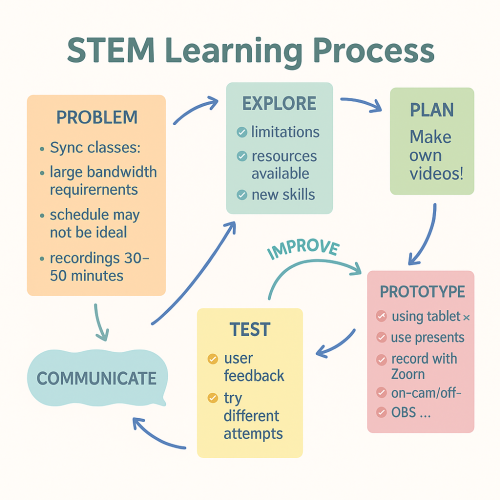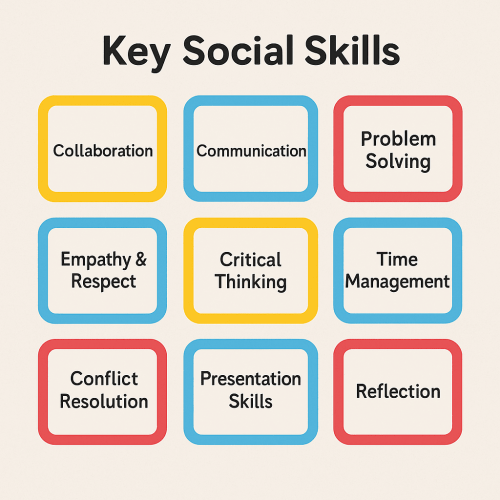What Is the STEM Quartet Framework?
The STEM Quartet Framework is an educational model that helps students connect the four core areas of STEM — Science, Technology, Engineering, and Mathematics — in a more integrated and real-world way.
Using Than Institute’s STEM Quartet Framework that includes Entrepreneurial Skills as a key component, while maintaining the integrity of the original STEM focus.
At Than Institute, we believe STEM knowledge becomes transformative when paired with an entrepreneurial mindset.
Our students don’t just learn how things work — they learn how to make things happen. Instead of teaching each subject in isolation, our framework encourages students to achieve higher skills and systems thinking:
- Apply knowledge from all four areas together to solve problems.
- See the connection between what they learn and how it applies in real life (e.g. apps, machines, health, energy, etc.).
- Think like innovators, not just memorize facts.

How It Works for Young Adult Learning:
Than Institute’s STEM Quartet + Entrepreneurship Framework
The STEM Quartet Framework at Than Institute helps learners see how Science, Technology, Engineering, and Mathematics are interconnected — and how they apply in solving real-world problems.
But at Than Institute, we go one step further by weaving in Entrepreneurial Skills — because innovation means little without the ability to turn ideas into action.
For learners aged 9–17 (or even older), our STEM Quartet Framework supports:
Science
Understanding natural laws, conducting experiments, and using evidence-based reasoning.Technology
Using digital tools and systems to solve challenges and communicate innovations.Engineering
Designing creative solutions, building prototypes, and iterating based on feedback.Mathematics
Applying logic, patterns, and data to make decisions, estimate costs, and measure success.Entrepreneurship (Than Institute addition)
Turning ideas into value — teaching students how to:Spot opportunities and problems worth solving
Take initiative and manage risk
Create products, plan budgets, market ideas, and pitch solutions
Communicate ideas with confidence
Learn resilience and adapt through real-world simulations.
Visionary Innovation (Jensen Huang Principle)
Cultivate the courage to:Tackle big challenges head-on
Pioneer bold ideas even when the path is unclear
Bridge technical brilliance with real-world impact.

Example in Action (Using Than Institute)
Let’s say Than Institute runs a module where students need to create a basic smart home system:
Science: They learn about sensors, electricity, and how environmental factors (like heat or light) affect circuit behavior.
Technology: They code the device using microcontrollers like Arduino or Raspberry Pi to automate lights, fans, or alarms.
Engineering: They design the structure, plan wiring, troubleshoot issues, and build a functional prototype.
Mathematics: They calculate voltage requirements, timing logic, and optimize energy or data usage.
Entrepreneurship: Students pitch their smart home product as a solution for energy-saving homes.
Visionary Thinking: How could smart home systems improve elderly care, climate resilience, or urban living?
Students don’t just learn theory — they combine knowledge across STEM to build something real, meaningful, and fun. This is the core of the STEM Quartet Framework.
Lead by Action
A prime example of how visionary leadership, deep tech understanding, and relentless innovation can transform industries. Let’s integrate one of his core philosophies into the Than Institute STEM Quartet + Entrepreneurship Framework:
Inspired by Jensen Huang’s Vision for the Future
We infuse Entrepreneurial Skills and visionary thinking, inspired by leaders like Jensen Huang, who famously said:
“Run toward the problem, not away from it.” – Jensen Huang
This mindset teaches our learners to embrace complexity and innovate courageously, not just solve problems — but to redefine what’s possible.